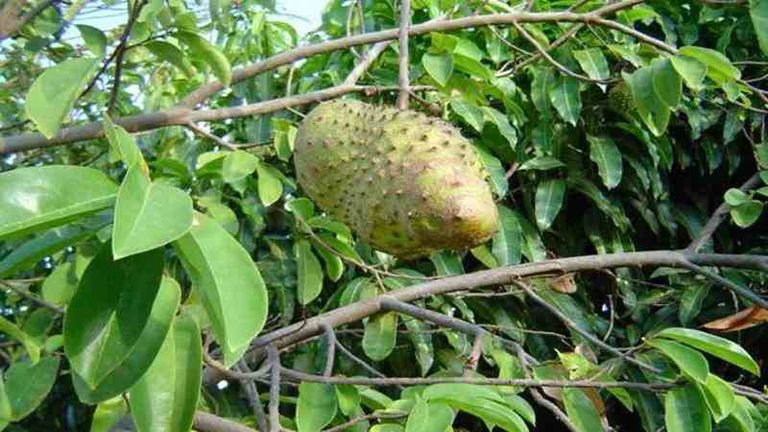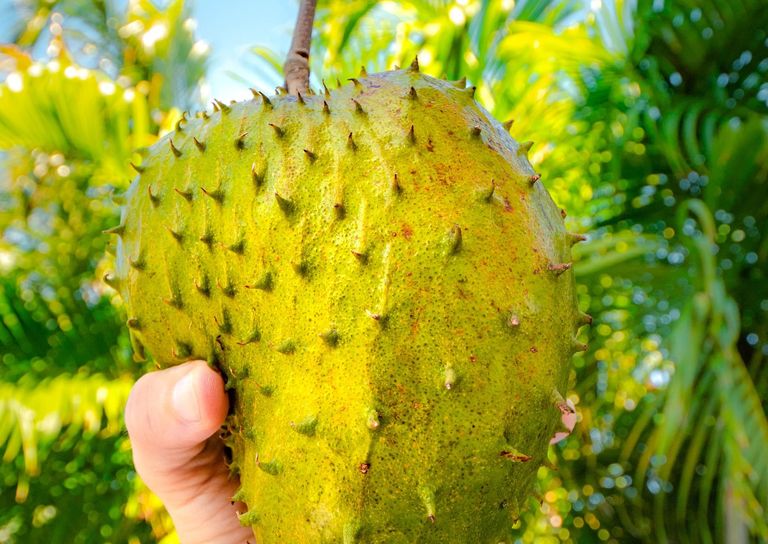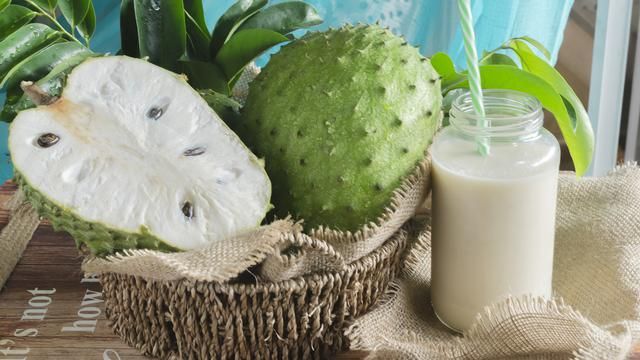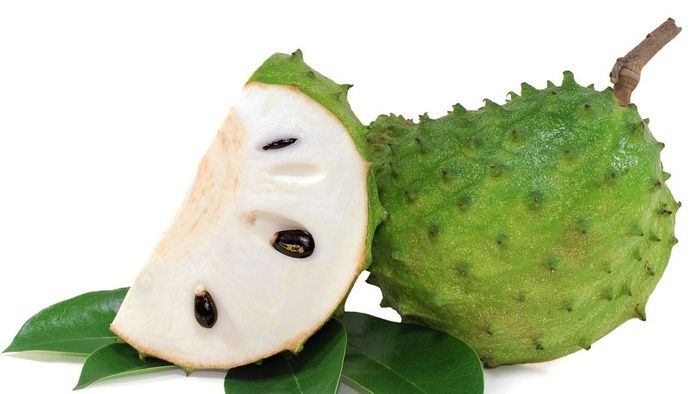
source
The soursop plant has glossy, dark green leaves and can reach a height of 10 meters. The pulp of the soursop fruit is soft and juicy and has a thick, spiny green skin.
Since the time of the Aztecs, Mayans, and Incas, who used it for both culinary and medicinal uses, soursop fruit has been recognized. In addition to being known as soursop in England and Spain, the fruit is also referred to as guanabana in Latin America.
how to grow soursop fruit:
- Choose healthy and high-quality soursop seeds, Verify that the seeds have robust stems, lush, dense leaves, and well-formed roots.
- Ensure the soil is fertile and loose, Make sure not to overwater the soil by watering it until it is only moderately moist.
- Create a planting hole that is about 50–60 cm broad and 50 cm deep. Make sure there are three to four meters between each planting hole.
- Place the soursop seeds in the planting hole, then cover them with soil all the way around. To stabilize the seeds and compact the dirt around them, apply pressure.
- Give the seeds a good flush with just the right amount of water. Water your plants frequently, especially in the early stages of cultivation until they are healthy seedlings.
- Regularly apply fertilizer to aid seedling growth. Choose organic fertilizers that have the nutrients that soursop fruit requires.
- Spraying pesticides and fungicides on seedlings on a regular basis will protect them against illnesses and pests. Use pepes in accordance with the stated dosage.
- When the seedlings of a soursop plant reach a height of around 50–70 cm, they are pruned. By removing half of the leaves, prune the plant's shoots. This enables the side branches to develop properly and strengthen the main stem.
- Hold off on harvesting the soursop fruit until it is ripe. When a soursop fruit is dark green in color and has a little squishy surface when touched, it is ready for harvest.
These are the methods that can be used to prepare soursop fruit. To ensure that the soursop plant grows well and yields mouthwatering fruit, take care to give it regular attention.
Numerous health advantages of soursop fruit include:
- Maintain Heart Health: Because the soursop fruit can lower cholesterol and blood pressure, it can aid in maintaining heart health.
- Keeping Bones Healthy: Soursop fruit's high phosphorus and calcium content can keep bones healthy.
- Cancer prevention: The soursop fruit's high antioxidant content may help stop the development of cancer cells.
- Immune System Booster: Because soursop fruit has a high vitamin C content, it can aid in immune system boosting.
- Support Digestive Health: The soursop fruit's high fiber content helps support digestive health maintenance and help prevent constipation.
- Overcoming Joint Pain: The anti-inflammatory content in soursop fruit can help overcome joint pain.
- Overcoming Skin Problems: Soursop fruit contains high levels of vitamin A and vitamin C, so it can help maintain healthy skin.
- Maintain Eye Health: The content of vitamin A in soursop fruit can help maintain eye health.
- Overcoming Insomnia: The content of magnesium in soursop fruit can help overcome insomnia or difficulty sleeping.
- Maintaining Nerve Health: The content of vitamin B complex in soursop fruit can help maintain healthy nerves.
In normal amounts, soured fruit is generally deemed safe to eat. Nonetheless, some people may experience adverse effects after consuming soursop fruit, just like they may with other meals or beverages. These are a few potential negative effects:
- Large-scale consumption of soursop fruit can result in gastrointestinal problems such diarrhea, bloating, and nausea.
- Effects on the nervous system: The soursop fruit contains the chemical annonacin, which, in large concentrations, can harm nerve cells and result in tremors, convulsions, and poor coordination.
- Low blood pressure: Eating a lot of soursop fruit might lower your blood pressure, which can make you feel weak and dizzy.
- Hypoglycemia: Large soursop fruit consumption can also result in a drop in blood sugar levels, especially in diabetics.
- Allergies: Some people who eat soursop fruit may develop allergic reactions such as skin rashes, itching, and swelling.
It should be remembered, nonetheless, that each person may experience different adverse effects based on their health status and dosage. Soursop fruit should not be used if you encounter any negative side effects. Instead, stop using it right away and see a doctor.


